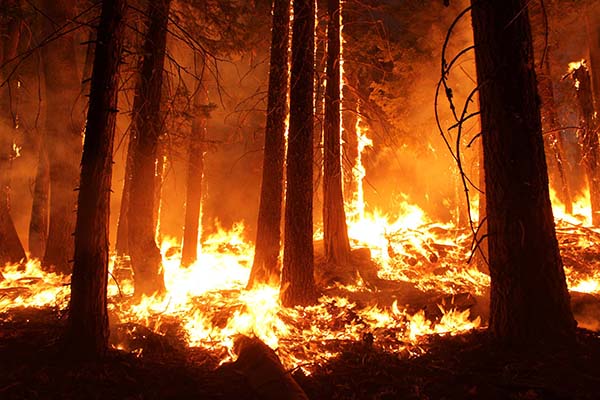Wildfires are known to emit large amounts of gaseous and particulate pollutants. In an effort to identify and quantify these pollutants, researchers took their instruments to the skies where they sampled and analyzed smoke plumes from aircraft flying over three major wild fires in the western United States. The results, reported in the Journal of Geophysical Research: Atmospheres (June 2017), showed that fine particulate matter was emitted at over three times the level that was previously estimated, making it a large source of particulate pollution in the region. Fine particulate matter, also known as PM1 or submicron particulate matter, is the most damaging size of particulate for human health, because it can be inhaled deep into the lungs, where the smallest of these particles, with diameters of less than 0.1 micrometer, can pass from the lungs into the bloodstream and can affect organs such as the heart. See also: Air pollution; Fire; Forest; Forest ecosystem; Forest fire; Particulates

In addition to particulate matter, the researchers identified over 80 gaseous compounds, with the most abundant organic compounds measured being methanol, formaldehyde, 2,3-butanedione, acetaldehyde, acetone/propanal, ethylene, ethane, furan, benzene, monoterpenes, propene, methyl vinyl ketone/methacrolein, acetonitrile, toluene, and acetylene (ethyne). These compounds do not appear to adversely affect the overall air quality of the western states, as they make up a very low percentage of the total emissions from all other sources.
An earlier study by W. M. Jolly and coworkers, modeling 35 years of meteorological data, found that fire seasons have become longer, with extreme weather events, such as high temperatures, low humidity, droughts, and high winds, to blame for this lengthening. As a result, mitigating wildfires may be important in a warming climate. One method for reducing the possibility of future catastrophic fires is through prescribed (planned) fires, which reduce the amount of biomass (fuel) burned. A potential benefit of prescribed fires is that they appear to be less polluting than wildfires in terms of fine particulate emissions, with wildfires emitting twice as much PM1 as prescribed fires when comparing airborne measurements. See also: Climate modeling; Extreme weather events; Global warming





